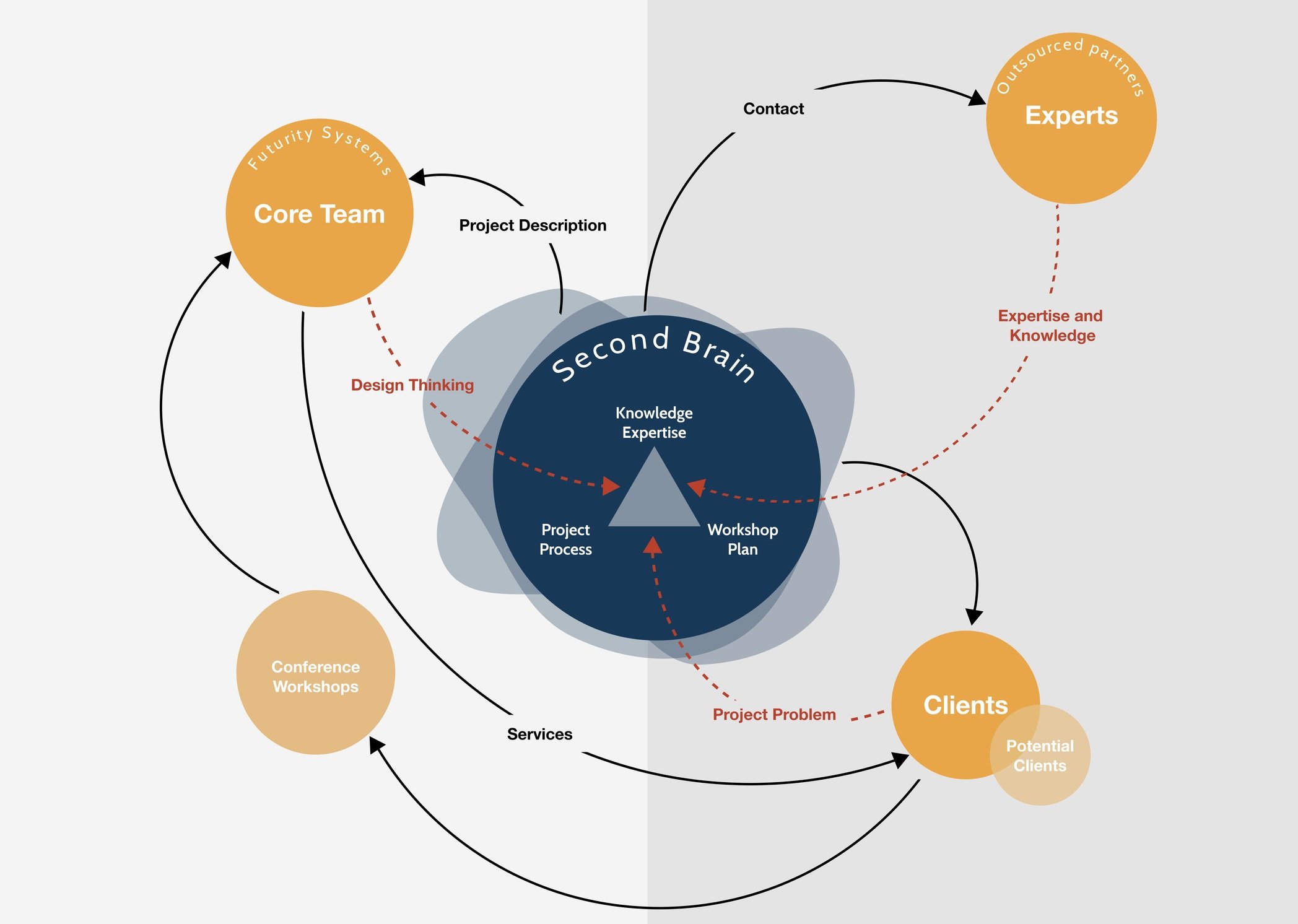
Leveraging AI Systems to Achieve
How might we streamline processes within the organization to improve efficiency,thereby enabling scalability?
Futurity Systems is a deep tech consultancy agency based in Barcelona ,founded on the premise of advancing the boundaries of conventional thought and practice, Futurity Systems amalgamates rigorous scientific methodologies with creative processes to provide “Futures-as-a-Service” (FAAS) to assist both corporate entities and governmental agencies in designing their next frontiers of discovery and application.
The modus operandi of Futurity Systems integrates the empirical rigor of scientific research, the creative constructs of design, the insights of engineering, and the analytical acumen of business management. Rather than being merely theoretical about the future, they propose to engage in its active formulation.
On the roadmap of Futurity is to scale for growth and impact, with the potential of working with various tiers of collaborators and community, building on a framework of open innovation, technology democratization, and knowledge hub, together with technologies such as our current data platform and gen AI, how might we expand innovation and impact in exponential ways?
The goal is to scale Futurity Systems’ impact by expanding its innovation ecosystem.
The Organizational Model
The Objectives
Expanding Futurity Systems’ reach and raise awareness of innovation in emerging fields. The aim is to help Futurity Systems grow its client base through the implementation of strategies across 5 key projects. This will support their goal of driving impact through continued innovation.
1.
Futuring is a ‘black box’- its inner workings are not
widely grasped. Futuring is still establishing its footprint, making it difficult for many companies to fully grasp. It is often mistakenly viewed solely as a form of innovation; however,futuring is a discipline rooted in forming hypotheses guided by scientific analysis and knowledge.
2.
There is a need to streamline workflows. Currently, there are knowledge gaps that exist between Futurity System’s core team, their curated experts, and clientele. Bridging these gaps requires establishing efficient channels to connect expertise, design capabilities, client needs, and feedback across these groups.
3.
There is a reliance on a single person. As the CEO of Futurity Systems, Cecilia MoSze Tham currently shoulders a heavy burden across multiple fronts: project coordination, business development, client relations, and daily operations. This centralization of duties creates a potential bottleneck, slowing efficiency as the company continues rapid growth. By decentralizing responsibilities and establishing a clear organizational structure and procedures, Futurity Systems can alleviate pressure on the CEO role.
4.
There is a need to increase visibility. Creating a sense of awareness as to what Futurity Systems do. Futurity Systems is often misperceived as solely an innovation-focused company. However, our core competency lies in crafting forward-looking strategies and visions of the future for clients.
5.
It offers multiple services but currently markets one service. The reality of Futurity Systems is that they offer multiple services ranging from design principles to strategic roadmap development. What is needed is a way to market their different services based on the requirements.
Futurity Systems seeks an innovative model to enhance networking with partners and facilitate knowledge flow
1. Outsourcing
- Find the right talent
- Communicate
- Knowledge share
2. Understanding FS
- Help clients understand the services FS offers.
3. Managing organizational processes manually
Fig 1 : The Organizational Model
ACTIVATION OF THE MODEL
Project 1: Project Diagnosis
Automatically developing project descriptions and project process through the Second Brain.
The second brain assists in analyzing the client's project and developing a project description.
The second brain analyzes the type of knowledge required for the project and compiles a list of experts.
The second brain contacts experts with a summarized project description.
Fig 2 : Project Diagnosis
Project 2: COLLABORATION
Automatically developing workshop plans from expert and core team knowledge for clients
Experts will input their expertise into the second brain, which then analyzes this information and incorporates it into each project process.
The project process will be continuously updated based on the input information.
Once the project process is sufficiently established, the second brain will generate a workshop plan in collaboration with Futurity Systems and experts.
Fig 3 : Collaboration
Project 3: Media
Automatically developing media posts to showcase what Futurity System is.
The second brain decides the type of content and media that needs to be catered to.
The majority of the value proposition takes place in matching the type of content to the type of media with cyclic iterations.
The matched type and content is then suggested for media coverage depending on the media need.
Generated content feeds the second brain as a result.
Fig 4 : Media
Project 4: Networking
Automatically reaching out to other companies or people who are interested in future thinking.
The second brain consolidates all the organizational tasks.
The second brain frees the organizational representative by automating organizational processes.
The org rep networks with clients and experts.
The process of which results in an influx of projects.
Allowing the second brain to keep growing cyclically.
Fig 5 : Networking
Project 5: Sustainable Systems
Evolving system that continuously grows the second brain through input of knowledge. Automatically developing project descriptions and project process through the second brain.
Fig 7 : Sustainable Systems










